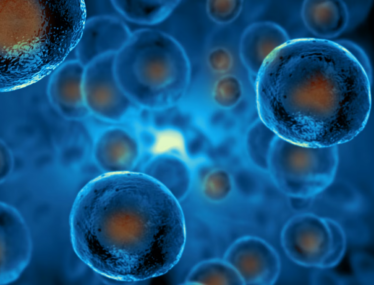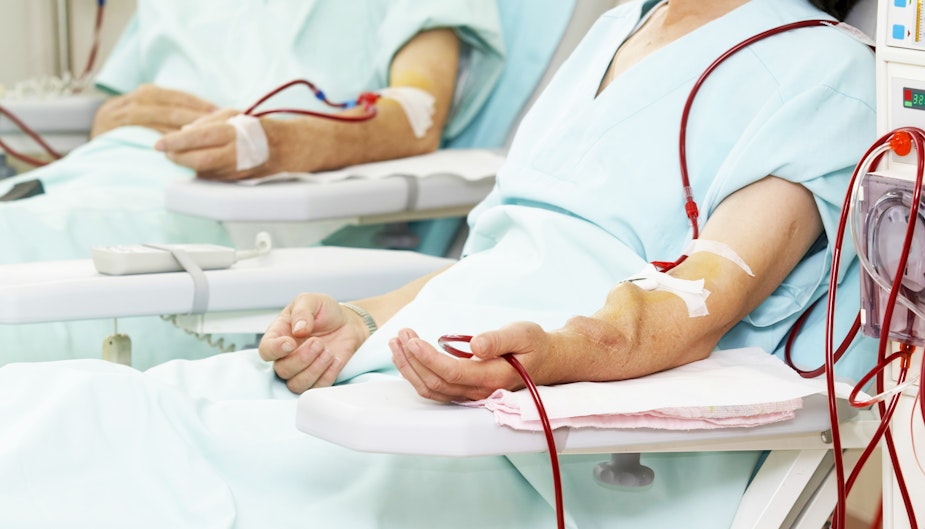What failure rate are we willing to accept in cell therapy manufacture? Insights from medical device development
By Dr Dan Strange

Autologous cell therapies hold great promise in the treatment of many cancers but are generally produced using processes and equipment for which there are concerns as to whether they are sufficiently reliable to support scale-out to 1000s of systems. Medical device development holds important lessons for achieving the required reliability for cell therapy automation equipment.
Automation is widely viewed as necessary to achieving the affordable scale-out of autologous cell therapies. These therapies, whereby a patient’s cells are extracted, manipulated and expanded outside the body and then reinfused back into the same patient, hold great promise. Approved CAR-T therapies have shown long-term remission in non-Hodgkin’s lymphoma patients for which all other treatments have failed. Ex-vivo gene therapies have provided cures for genetic disorders for which the prognosis is otherwise life-long treatment with a poor survival rate.
However, manufacturers of early current therapies face significant challenges in reliably producing product, which can have a significant impact on operating margin and, more importantly, patient outcomes. Due to manufacturing failures, only 90% of Novartis Kymriah CAR-T therapies can be shipped at all [1]. Gilead’s Yescarta, while significantly improved, still only successfully hits specification 97% of the time [2]. While modest 90%+ reliability rates may be acceptable in the current context where no alternative treatments exist, even a failure rate of 0.1% would be atypical for a medical device/therapy for which the failure to treat might result in death.
Autologous cell therapies are currently generally produced using labour-intensive manual processes. In addition to driving down costs, a key aim of introducing automation into cell therapy manufacture is to improve control and reliability. With this in mind, how reliable does dedicated automation equipment need to be, and what can we learn from medical device development frameworks?
In this blog, we discuss the following ideas:
- A 5% failure rate isn’t good enough
- Cell therapy bioprocessing as a medical device
- What does the future hold?
A 5% failure rate isn’t good enough
First it is important to realise that in many ways the requirements for autologous cell therapy processing equipment are more akin to a dialysis machine than to the traditional bioprocess equipment used in the production of biologic medicines, where a single patient’s cells are being processed by the system and a failure in the process could potentially result in harm to the patient.
A typical biologics production process generally relies on a small number of manufacturing systems that have been well characterised and qualified at the manufacturing site. Critical process parameters and quality attributes are well established. Failures can be robustly detected using Quality Control checks at the end of process. Yet despite this well-developed understanding, biologics production processes still typically have a batch failure rate of around 5%, arising from a variety of sources such as contamination, operator error, and equipment failure [3]. However, this process failure only results in a commercial loss.
In contrast, the loss of product in an autologous cell therapy potentially results in the patient not receiving the therapy. If the patient is a stage 4 cancer patient, this may mean they do not live long enough to receive any further treatments. Typically, a drug delivery device that delivers a lifesaving medication (such as the infusion pump that delivers the cell therapy) would need to be designed to minimise the probability of catastrophic harm to the patient as less than 1 in 100,000 or even 1 in a million, though higher rates may be judged acceptable if the benefit to the patient outweighs the risk.
Furthermore, if scaled-out commercial volumes are to be achieved, these low failure rates must be maintained across hundreds to thousands of individual automation units operated by large numbers of staff, potentially across different sites.
These challenges are commonly encountered when developing a medical device or combination product where the drug is in inextricably linked with its delivery device — much like cell therapies are inextricably linked with their manufacturing process.

Cell therapy bioprocessing as a medical device
At a top level this means implementing a strong risk management plan at the heart of any development of cell-therapy automation system. This plan will consider risks that may arise at each stage of the devices’ life cycle, including design, manufacture, servicing and maintenance – and, finally, use.
Robust to use and foreseeable misuse
Training is rarely a sufficient mitigation to completely eliminate potential use errors, even though it is a key component of ensuring quality in GMP manufacture. In FDA inspections of GMP facilities, failure to follow procedures is the most common observation cited [4].
Even highly trained professionals, such as surgeons or nurses, often misuse equipment, including defibrillators, ventilators and infusion systems [5, 6]. In the 1990s, nearly 100,000 deaths per year in the US healthcare system were attributed to medical errors, which has led to a strong emphasis on human factors engineering being incorporated into the design of medical devices, for example through IEC 62366 [7].
Instead of attempting to mitigate potentially unacceptable use errors through training, the use error or the resulting failure modes should be eliminated by design, specifically through human factors engineering. This means carrying out formative studies with relevant users early in the development to identify potential unanticipated use errors and developing suitable mitigations.
Furthermore, a human-centred design approach will ensure that the equipment is not just free of risk but also easy to use, to limit the chance of use error in the first place.
Robust to input (biological) variability
Perhaps the greatest challenge in the design of cell therapy automation equipment is to control for variation arising from patient starting material (cell and/or tissues) and how this interacts with the equipment. The process may appear like a black box, with variable input going in and unpredictable output going out.
This variability may seem intractable because it often falls in the interface between the design of the biological process and the engineering design of any automation equipment: Is the variability arising because the automation equipment is not performing in the same way each time (i.e. not being robust to manufacturing variability), or because the starting material itself is not always sufficiently viable? Furthermore, these challenges lie across skill sets: engineers cannot develop these systems then pass them to biologists for application testing.
Instead, they must work side by side at all steps. By breaking the automation into subsystems and building knowledge and understanding in the critical process parameters early in the design process, a design space can be mapped out and this intrinsic uncertainty bounded and contained. While the automation equipment will always need to be characterised using real patient material, surrogates can be used to explore the design space and test that the automation equipment itself is reliable and robust when given the same sample each time.
Robust by design
A medical device should be designed such that no single fault condition leads to an unacceptable hazard. This is often overlooked in the context of electrical systems, where the failure of many commodity components, their interaction, susceptibility to EMC, and change in environmental conditions could all lead to unacceptable behaviour such as inaccurate readings by measurement sensors and consequently poor control of automated processes.
Standards like IEC 60601 outline the general requirements for ensuring and verifying the basic safety and essential performance of a medical device, and while the process of identifying, designing and verifying risk mitigations might be familiar to many, it is not typically part of the process for electronic systems in consumer or general lab equipment used in cell-therapy manufacture.
Hazards introduced by firmware and software control systems can be much harder to detect. GAMP 5 provides some guidance on the relative risks of software. However, for cell therapy automation equipment it may be advisable to implement a development lifecycle standard such as ISO62304, and/or specific measures from IEC 61508, in order to ensure a robust design and reduce the risk of unintended behaviour.
Robust to manufacturing variability
With potentially hundreds of individual automation systems needed to grow manufacturing capacity and produce therapies, each potentially using hundreds of increasingly complex patient-specific disposables, it will not be possible to fully qualify each system. Instead manufacturing variability must be accounted for in the design process, using tools such as probabilistic design and modelling, ensuring that the device will still function effectively at the edges of specification — as discussed in this blog post.
What does the future hold?
Today’s autologous cell therapies offer a disruptive improvement upon the standard of care, even with their associated manufacturing challenges. Regulators have encouraged the development of these advanced therapies and in doing so they have appeared to accept the use of equipment akin to traditional biologics processes and have not sought to impose any regulation on this equipment beyond traditional GMP guidelines for the process. However, as more comparable therapies reach the market, in the same way as the regulatory framework for medical devices (such as 21 CFR 820) have evolved to put more emphasis on being ‘robust by design’, will the same occur for cell therapy equipment?
Regardless, the considerations above show that a medical device development framework can help achieve reliability rates required for the wider roll-out of successful cell therapies. In particular, aspects of good practice such as probabilistic design and human factors engineering are likely to be needed if the reliability rates typical of other life-saving medicines are to be achieved.
Of course, cell therapy process development leads have the opportunity to design and control the whole process, beyond each automation system, in a way that is often not possible for a typical medical device. In fact, an early stage process development lead may wish to maintain flexibility to tune or adapt their process on individual system, and this may appear to be in tension with the drive to design safe reliable automation systems that cannot be misused. While this is true, adopting a strong risk management approach in the design of individual pieces of equipment will enable the process to be broken down into more reliable subsystems, providing the process development lead with more control and certainty, and in the end may lead to accelerated time to scale-out.
References
01. Novartis still hasn’t solved its CAR-T manufacturing issues
02. Yescarta to Europe: Steps learned and production 97% on-spec
03. Biotech Facilities Average a Batch Failure Every 40.6 Weeks
05. Hazards With Medical Devices: The Role of Design
06. The science of human factors: separating fact from fiction
07. The growing role of human factors and usability engineering for medical devices



